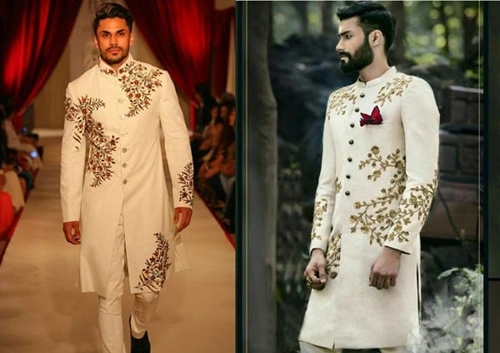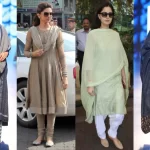Delhi, the capital union territory of India, is renowned for its vibrant diversity and cultural heritage. This city, with its vast historical background, has profoundly influenced its traditions and customs. Among these traditions is the traditional dress of Delhi, which harmoniously blends elements from various regions, including North, South, and Northeast India. The result is a unique and culturally rich wardrobe that reflects the unity and diversity of this bustling metropolis. Here’s a closer look at the traditional attire of both women and men in Delhi.
Traditional Wear of Women in Delhi
Salwar Kameez Suit
The salwar kameez is a quintessential part of Delhi’s traditional wardrobe. The salwar is a pair of loose-fitting pants gathered at the waist with a cotton string, available in various styles, including the churidar, which is tight at the ankle and features multiple pleats. Paired with the salwar is the kameez, a long tunic that may be adorned with intricate embroidery, mirror work, and zardosi. This ensemble is not only comfortable but also elegant, showcasing the rich craftsmanship of Delhi.
Dupattas
Dupattas are long, flowing pieces of cloth that add a touch of grace to any outfit. Typically made from cotton or embellished with sequins, zari, and mirror work, dupattas are worn over the shoulders and often used to cover the head. They play a significant role during special occasions and festivals, providing both style and protection from the sun.
Ghagra Choli
The ghagra choli is another traditional outfit favored by women in Delhi. The ghagra is an ankle-length, flared skirt that is worn with a choli, a fitted blouse decorated with mirror work and elaborate embroidery. This attire is often chosen for festive occasions and celebrations, combining traditional charm with contemporary style.
Chikankari Sarees
Chikankari sarees are celebrated for their exquisite craftsmanship. Made with intricate chikankari embroidery, these sarees often feature paisley motifs, floral patterns, and delicate white or off-white threads. The elegance of chikankari sarees lies in their subtle beauty and timeless appeal, making them a popular choice for formal events and weddings.
Zardosi Sarees
Zardosi sarees represent one of the oldest forms of embroidery in Indian textiles. Originating from Persian art, these sarees are richly adorned with gold and silver thread work and intricate mirror designs. Typically made from luxurious fabrics like crepe, chiffon, georgette, and silk, zardosi sarees are a favorite among brides and are often paired with elaborate gold and silver jewelry.
Traditional Dress of Men in Delhi
Sherwani
The sherwani is a traditional attire primarily worn by grooms during weddings. This four-piece outfit includes a velvety kurta, a pair of loose-fitting pajamas, and a matching turban. The kurta is often embellished with unique mirror work, and the addition of a dupatta draped over one shoulder enhances the regal look of the sherwani. This attire is a symbol of elegance and is a prominent feature of Delhi’s traditional dress.
Kurta Pyjama
The kurta pyjama is a staple of traditional men’s wear in Delhi. The kurta is a long tunic made from cotton or silk, often featuring nature-inspired designs such as floral or paisley motifs. It is paired with loose, baggy trousers known as pyjamas. This outfit is commonly worn for everyday purposes as well as during special occasions, combining comfort with style.
Dhotis
Dhotis are traditional garments worn primarily in rural areas but are also seen in urban settings during special occasions. These long pieces of cotton fabric, usually in white or cream, are draped around the waist and secured at the back. When paired with silk kurtas, dhotis offer a blend of traditional elegance and modern sensibility.
Conclusion
The traditional dress of Delhi is a vibrant reflection of the city’s rich cultural heritage. From the elegant salwar kameez suits and intricate sarees to the regal sherwanis and comfortable kurtas, Delhi’s traditional attire showcases a blend of historical and contemporary influences. The use of various embroidery techniques, such as Zardosi and chikankari, adds sophistication and artistry to these garments. Traditional dress remains a vital part of Delhi’s cultural identity, particularly during festivals and special occasions, celebrating the city’s diverse and inclusive spirit.


